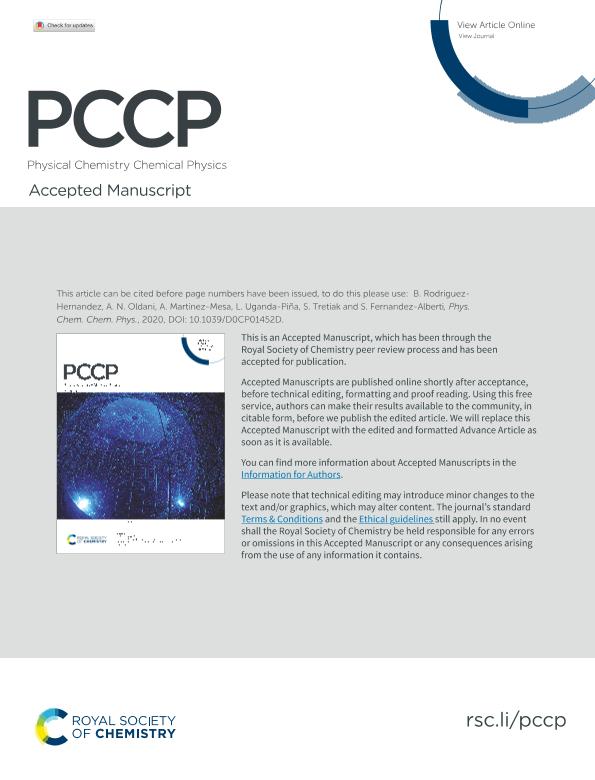Artículo
Photoexcited energy relaxation and vibronic couplings in π-conjugated carbon nanorings
Rodríguez Hernández, Beatriz ; Oldani, Andres Nicolas
; Oldani, Andres Nicolas ; Martinez Mesa, Aliezer
; Martinez Mesa, Aliezer ; Uranga Pina, Llinersy; Tretiak, Sergei; Fernández Alberti, Sebastián
; Uranga Pina, Llinersy; Tretiak, Sergei; Fernández Alberti, Sebastián
 ; Oldani, Andres Nicolas
; Oldani, Andres Nicolas ; Martinez Mesa, Aliezer
; Martinez Mesa, Aliezer ; Uranga Pina, Llinersy; Tretiak, Sergei; Fernández Alberti, Sebastián
; Uranga Pina, Llinersy; Tretiak, Sergei; Fernández Alberti, Sebastián
Fecha de publicación:
07/2020
Editorial:
Royal Society of Chemistry
Revista:
Physical Chemistry Chemical Physics
ISSN:
1463-9076
Idioma:
Inglés
Tipo de recurso:
Artículo publicado
Clasificación temática:
Resumen
Conjugated carbon nanorings exhibit unique photophysical properties that, combined with their tunable sizes and conformations, make them suitable for a variety of practical applications. These properties are intimately associated to their strained, bent and sterically hindered cyclic structures. Herein we perform a comparative analysis of the photoinduced dynamics in carbon nanorings composed of nine phenyl units([9]CPP) and nine naphthyl units ([9]CN) respectively. The sterically demanding naphthyl units lead to large dihedral angles between neighboring units. Nevertheless, the ultrafast electronic and vibrational energy relaxation and redistribution is found to be similar for both systems. We observe that vibronic couplings, introduced by nonadiabatic energy transfer between electronic excited states, ensure the intramolecular vibrational energy redistribution through specific vibrational modes. The comparative impact of the internal conversion process on the exciton spatial localization and intra-ring migration indicates that naphthyl units in [9]CN achieve more efficient but less dynamical self-trapping compared to that of phenyl units in [9]CPP. That is, during the photoinduced process, the exciton in [9]CN is more static and localized than the exciton in [9]CPP. The internal conversion processes take place through a specific set of middle- to high-frequency normal modes, which directly influence the spatial exciton redistribution during the internal conversion, self-trapping and intra-ring migration.
Palabras clave:
Nonadiabatic molecular dynamics
,
Excited states
,
Nanorings
Archivos asociados
Licencia
Identificadores
Colecciones
Articulos(SEDE CENTRAL)
Articulos de SEDE CENTRAL
Articulos de SEDE CENTRAL
Citación
Rodríguez Hernández, Beatriz; Oldani, Andres Nicolas; Martinez Mesa, Aliezer; Uranga Pina, Llinersy; Tretiak, Sergei; et al.; Photoexcited energy relaxation and vibronic couplings in π-conjugated carbon nanorings; Royal Society of Chemistry; Physical Chemistry Chemical Physics; 22; 27; 7-2020; 15321-15332
Compartir
Altmétricas



